
The Wonderworking Kursk Root Icon of the Mother of God (Our Lady of Kursk) dates to the 13th century and is considered one of the most sacred and important Orthodox Christian images. The icon depicts the Virgin Mary with Child, raising her hands in an intercessory prayer. On top, there are depictions of God the Father and the Old Testament prophets.
This icon is credited with healing Saint Seraphim of Sarov, one of the most venerated Russian saints. For centuries, Russian soldiers were blessed by this icon before going into battle. Also, a religious procession in the icon’s honor is depicted in one of the most famous paintings by leading 19th century artist Ilya Repin.
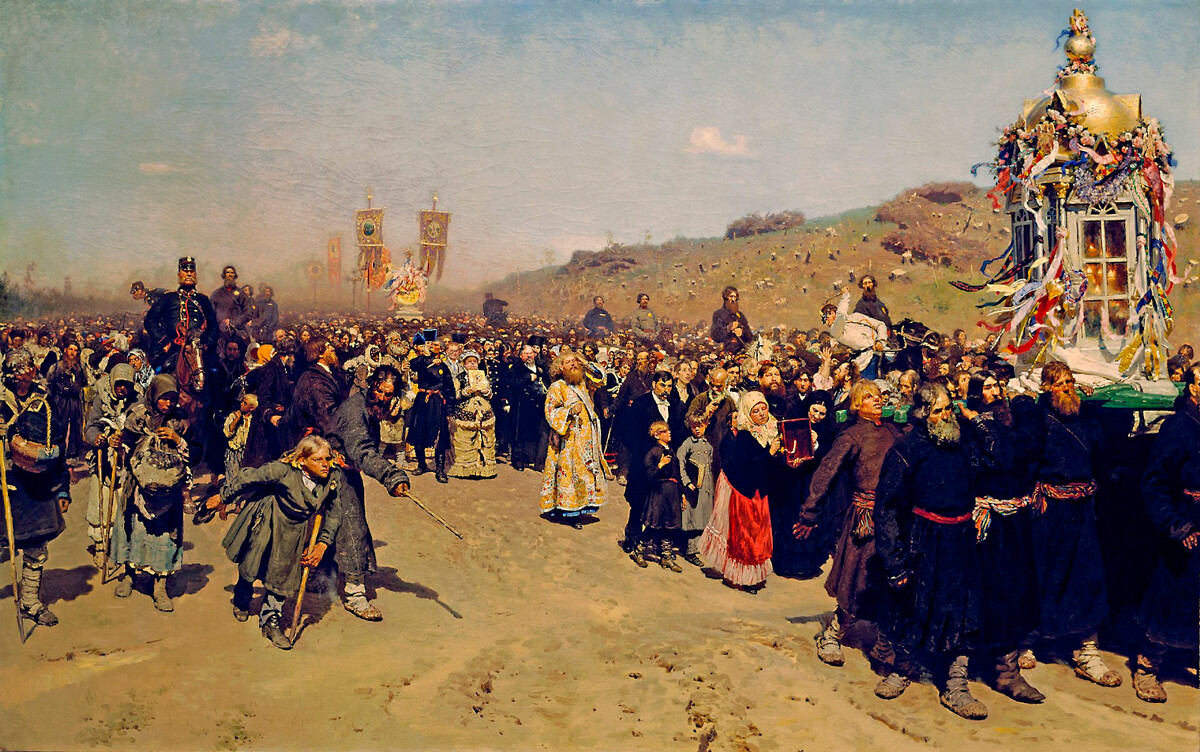
Ilya Repin. Religious Procession in Kursk Governorate, 1880-1883
Tretyakov GalleryToday, oddly enough, this icon can be found in Manhattan, in the New York Cathedral of the Sign which belongs to the Russian Orthodox Church Outside of Russia. After the Bolsheviks seized power in 1917, this icon became a symbol and a sacred object for all Russians who had fled their homeland and were scattered across the globe as the new Soviet government launched a brutal anti-religious campaign.
Before the icon found its way to New York City, it endured many tribulations, ranging from the 13th century Mongol invasion to a bomb explosion by late 19th century atheist revolutionaries and finally, its escape from Bolshevism in 1919 by way of a long and dangerous journey across southern Russia and then to Serbia. And later the sacred image made yet another long journey across Europe and the Atlantic Ocean.
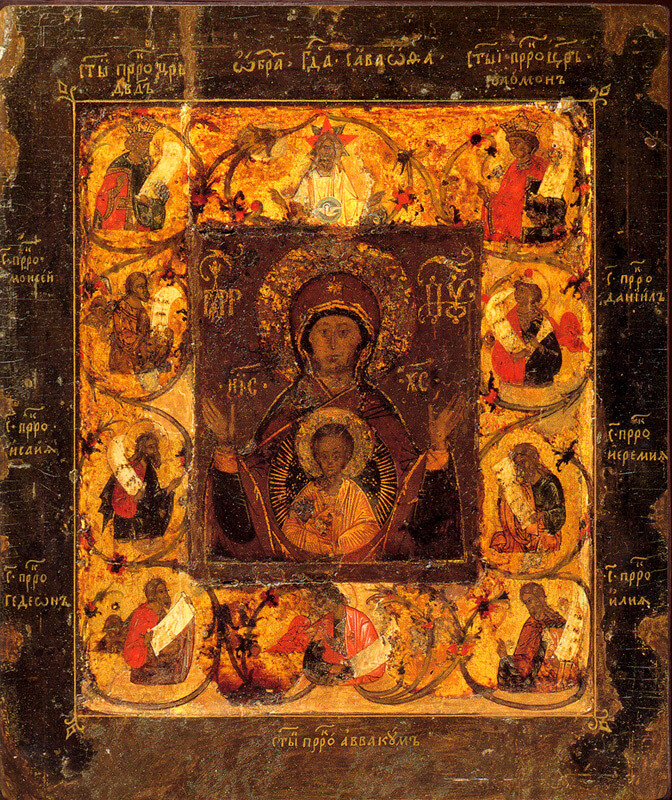
Our Lady of Kursk
Public domainLegend says that the icon miraculously appeared on September 8, 1295, which is the Virgin Mary’s birthday according to Russian Orthodox tradition. In fact, this date is still officially celebrated by the Orthodox Church as the day of the icon’s ‘birthday’. In the late 13th century, Russia was still suffering from the raids of the Mongol-Tatars, and not far from the old city of Kursk, which had been destroyed and burned down by Batu Khan, a local Russian hunter found this icon lying by the roots of a tree. Hence, that’s why it’s called the “Root Icon”.
When the hunter picked it up, a spring bubbled out from the spot where he had found it. So, the hunter built a chapel for the icon, and soon, people from all around the Russian lands began flocking to the site in order to pray before the sacred icon.
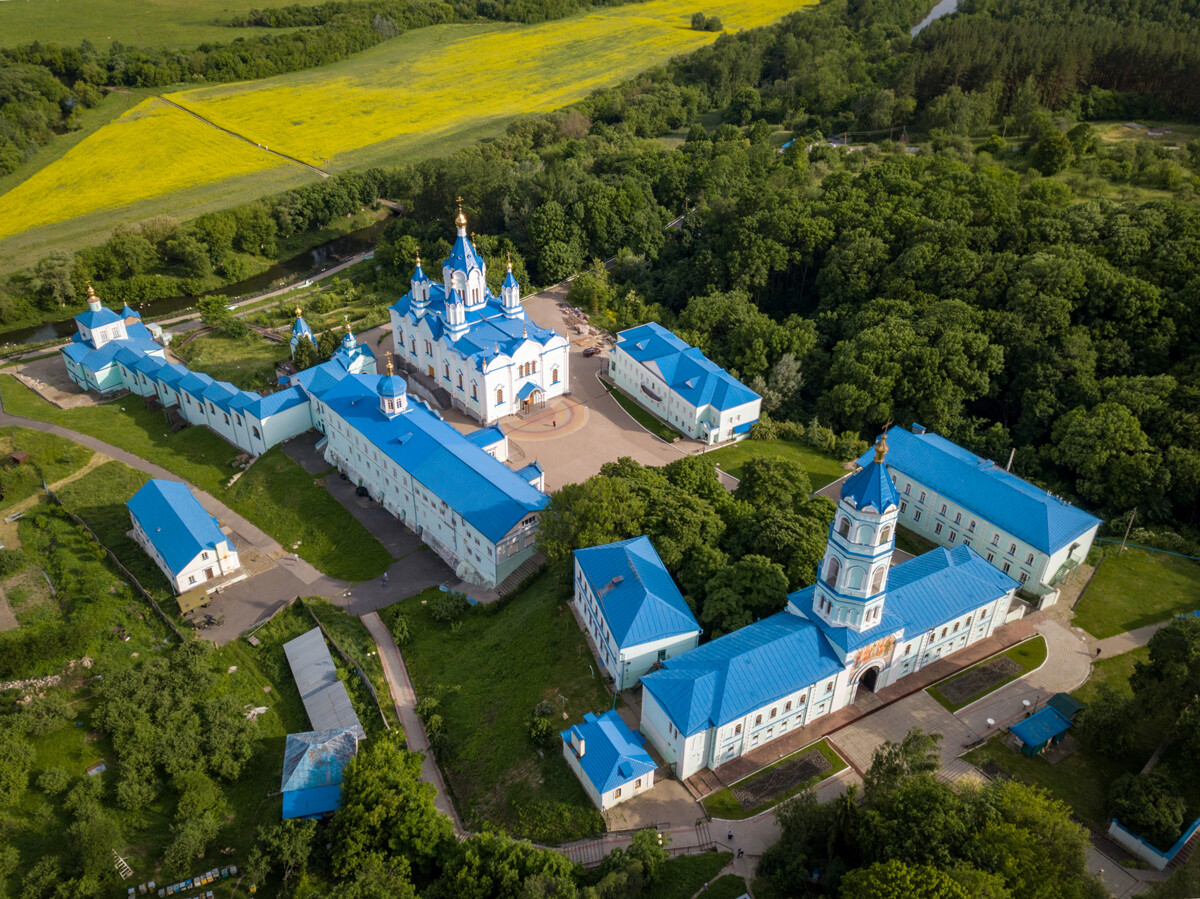
Korennaya Pustyn monastery in Kursk
eyphoriaa (CC BY-SA 4.0)Almost a century later, the Mongols made another raid into the Kursk region. Having stumbled upon the chapel with the venerable icon along their way, the Mongols decided to burn it to the ground, but for some strange reason they were unable to light the fire. Then they took the icon and slashed it in half, throwing its two halves in different directions. Only then did they manage to burn the chapel.
They took a local elderly priest captive and tortured him for a long time in order to force him to abandon his faith and accept their pagan beliefs. But, as if by a miracle, while the priest was singing a prayer in honor of the Virgin Mary, he was spotted by the envoys of the Moscow Tsar, and they ransomed him out of captivity.
The priest returned to the place where the chapel stood and found the halves of the split icon. When he put them together, they organically grew whole again, as if no damage was done in the first place.
In 1597, after the conclusion of centuries of Mongol devastation, the city of Kursk was finally restored and repopulated. It was at this time that a monastery was built in honor of the icon, and which was called the Hermitage of the Roots.
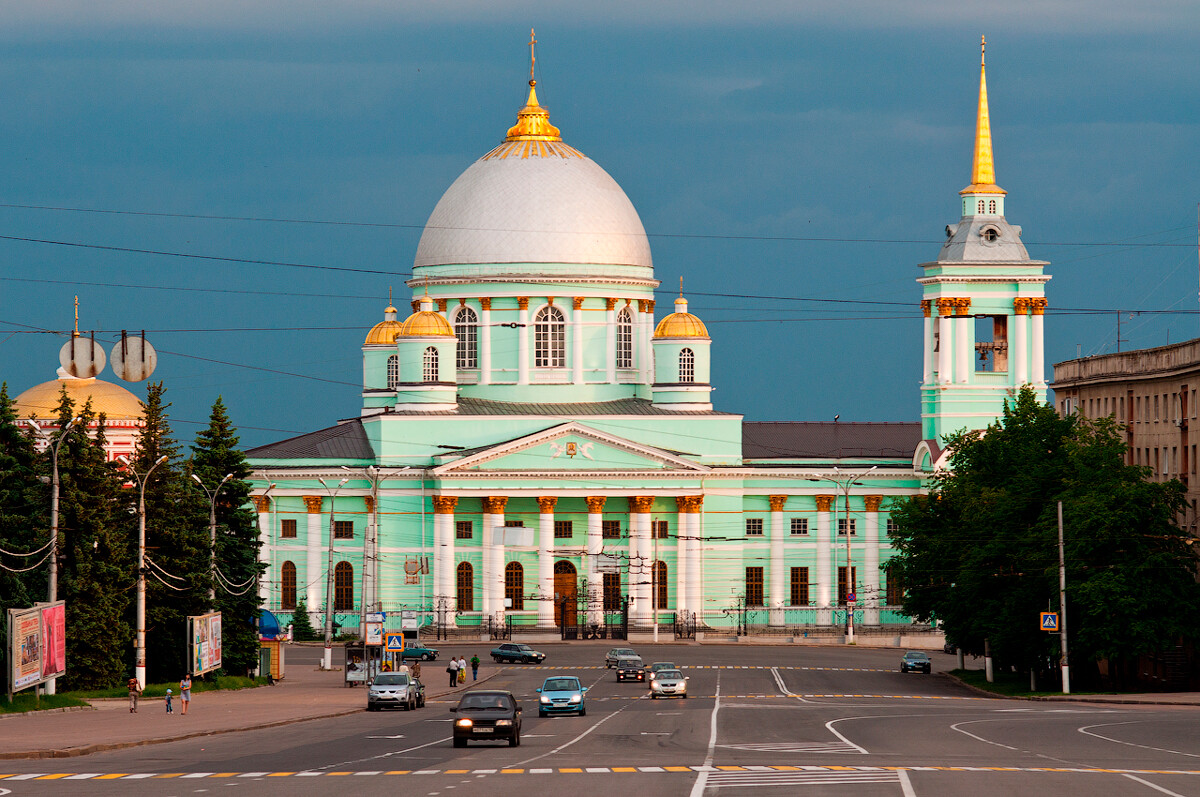
Cathedral of Our Lady of the Sign in Kursk
Alexei Ilyin (CC BY 3.0)As the icon’s miracle-working power and fame spread across the Russian lands, many believers flocked to Kursk to pray to God before the icon. During the Time of Troubles in the early 16th century, when Russia’s central government had collapsed, False Dmitry decided to use the icon for his selfish purposes.
As a former monk, Dmitry knew that the icon had great influence over the population, and he thought the Russian people could be swayed to support his bid for power if he possessed such a sacred object. In addition, he also wanted to obtain the icon’s supernatural blessings.
Therefore, Dmitry ordered the icon to be brought to the headquarters of his political movement in the city of Putyvl and prayed before it every day. Later, he took the icon on his military campaign against the city of Moscow. For some time, it seemed that this icon was truly helping him – the impostor to the throne even managed to seize power in Moscow for some time.
In the end, however, False Dmitry was killed during a coup. While the icon had gone missing from its home in Kursk, believers still came to that church and prayed for Russia's deliverance from its enemies. Finally, after yet another lengthy siege by an invading Polish army, Kursk was fully liberated.
The man who was elected Russia’s new tsar came from the dynasty of the Romanov boyars. His name was Mikhail Fyodorovich, and he ordered the return of the icon to the city of Kursk and built the Cathedral of the Sign in its honor. From that time on, a new tradition was established – on the ninth Friday after Easter, the Orthodox believers in Kursk held a religious procession with the icon that went from the Kursk Cathedral of the Sign to the Hermitage of the Roots, which was the icon’s old place of display. In the late 19th century, this religious elaborate procession was vividly depicted in a painting by Ilya Repin.
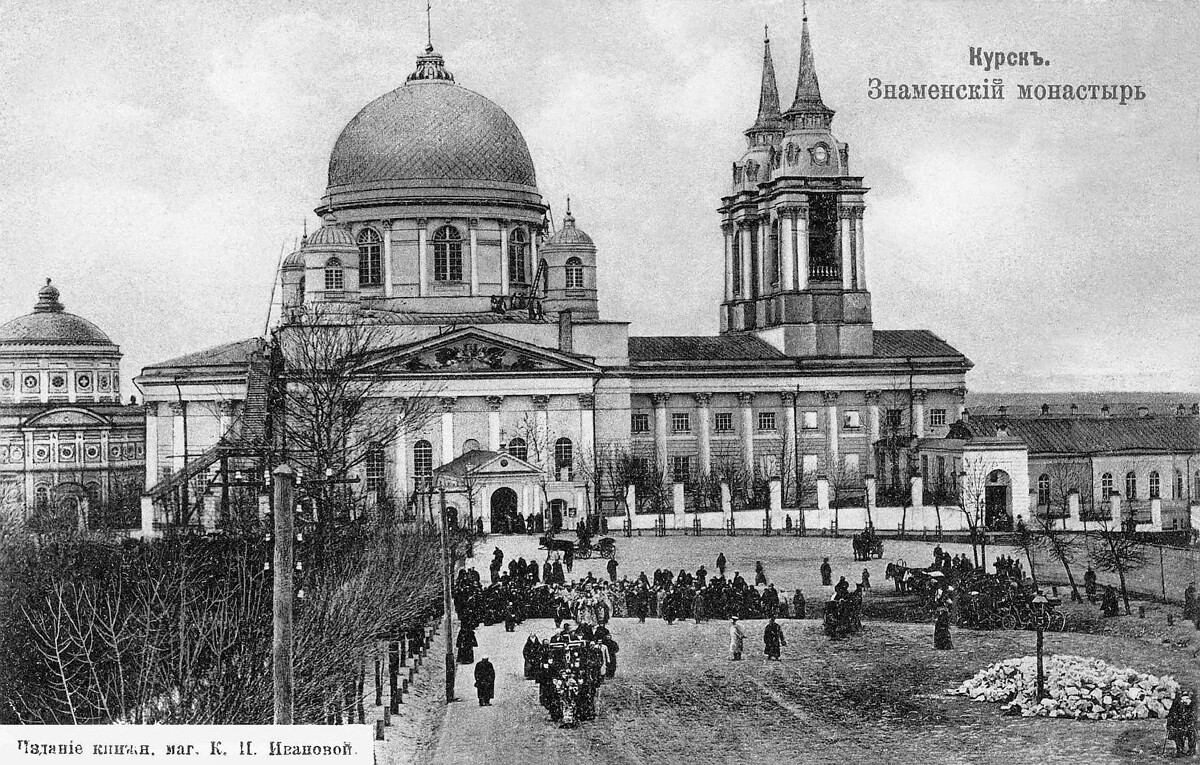
Religious procession in Kursk after the explosion, 1898
Public domainAt the end of the 19th century, Orthodoxy in Russia was experiencing a crisis – many revolutionary and liberal-minded youth appeared who didn’t believe in God. Some of them carried out terrorist attacks against the Tsarist government and regularly set off devastating explosions. In one attack, in 1868, four atheists from Kursk assembled a homemade bomb and planted it in the cathedral. They wanted to prove to themselves and others that this icon had none of the power that had been attributed to it, and that God doesn’t exist.
A powerful explosion shook the cathedral. Thankfully, the attack happened after the service had been conducted, when the cathedral was already empty. But, to everyone’s astonishment, the icon was left unscathed, though the stone and metal railing and steps around it were destroyed. All of the cathedral’s windows and even some of the walls were damaged, but the glass in the icon case was still intact.
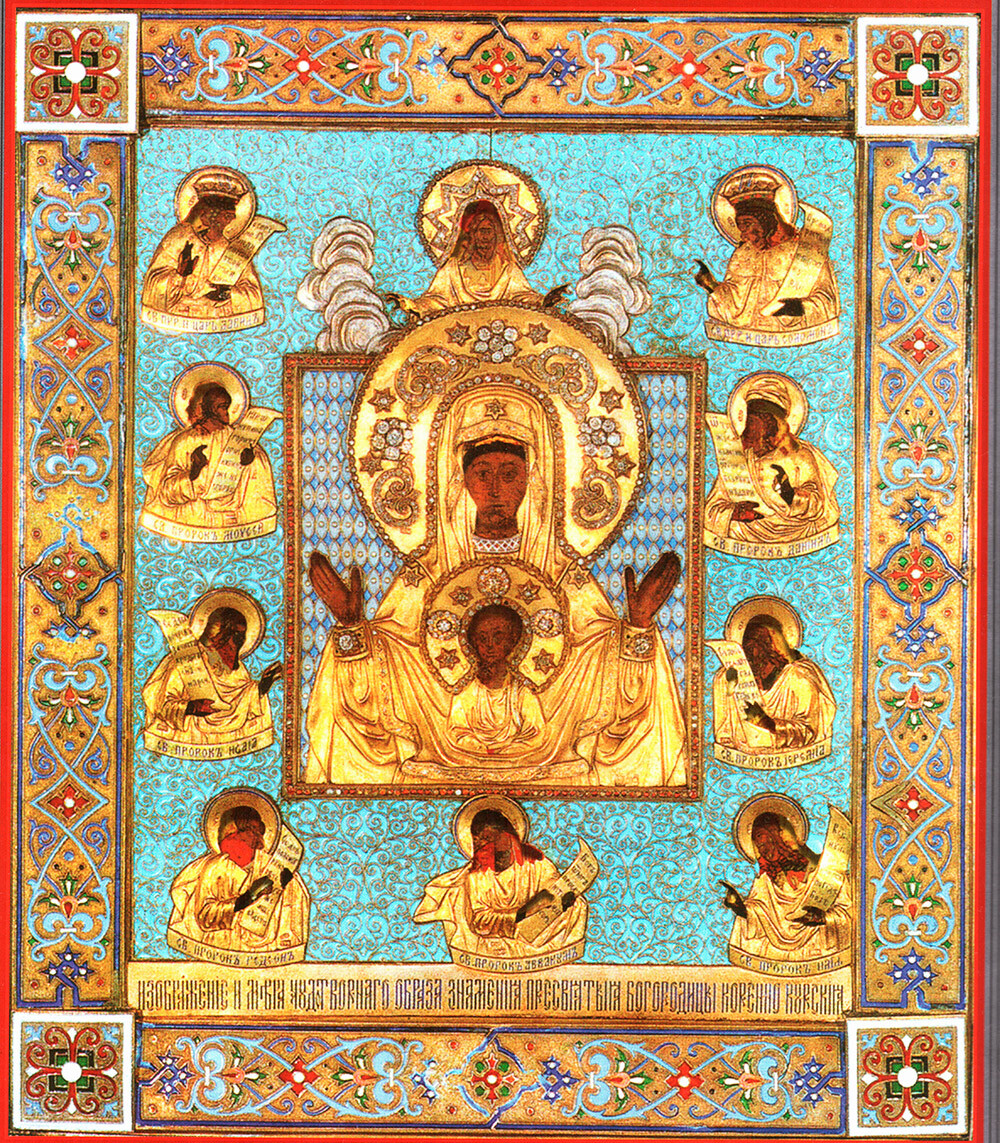
The Kursk Root Icon in its modern riza is held in New York
Public domainSoon after the Revolution in 1917, the icon suddenly disappeared. Several weeks later, however, it was found dumped in an old sack along with an exact copy. The precious riza (revetment) had been removed from both icons, and since few people had seen this icon without its riza, no one understood which one was genuine and which was the copy. An iconographer who had made the copy helped in identifying it. Since then the icon was given a new silver riza, coated with blue enamel. To this day, the icon is covered by it.
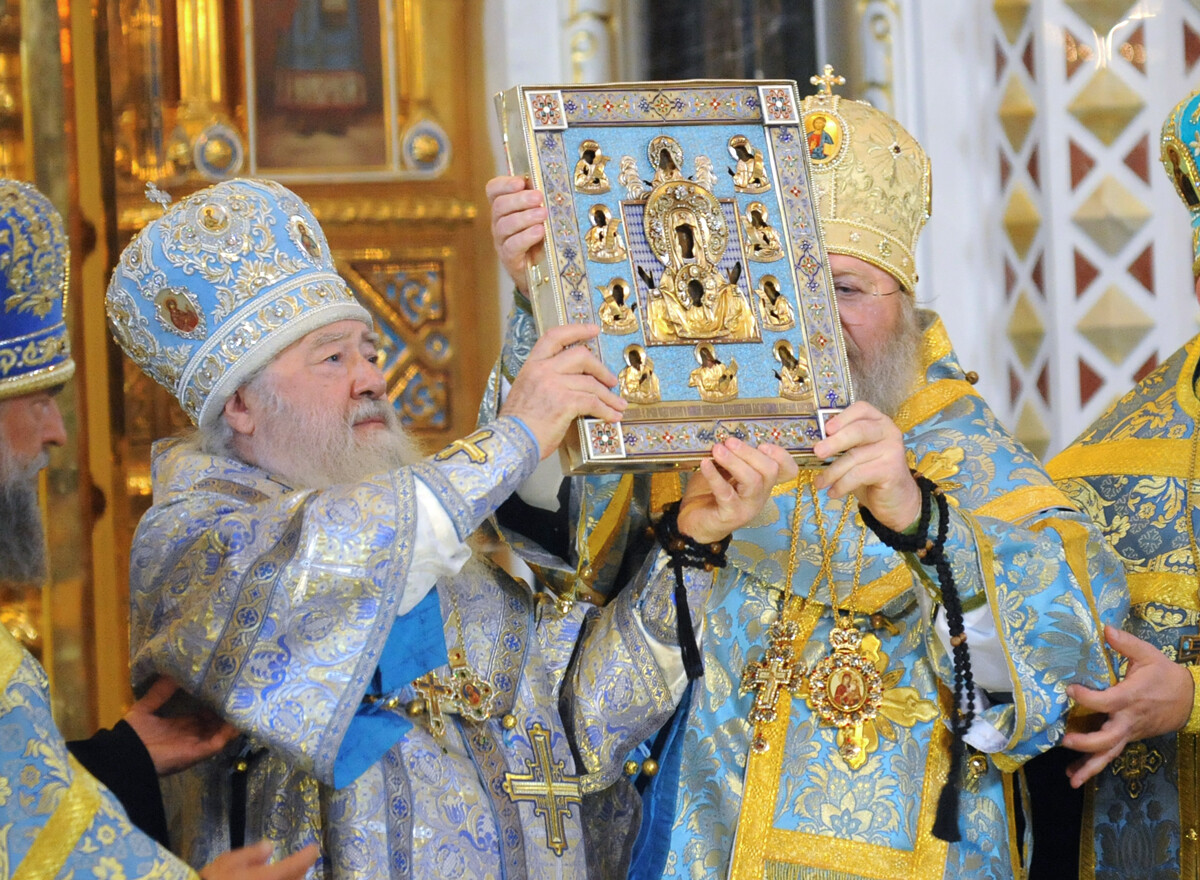
Metropolitan Yuvenaly of the Russian Orthodox Church and Metropolitan Hilarion of the Russian Orthodox Church Outside Russia holding the Kursk Icon while its visit to Moscow, 2009
Grigory Sysoyev/SputnikIn 1920, the Red Army reached Kursk, and the White Army of General Denikin retreated from the city, offering the local priests to escape in order to avoid retribution by the communists. The priests, however, decided that the icon had to be saved from the Bolsheviks, and so they embarked on a journey to the south, eventually leaving Russia through Crimea, and then to Serbia, to where many White Army soldiers and sympathizers had fled.
Up until 1944, the icon was stored in the Jazak Monastery in Yugoslavia and then in the Church of the Holy Trinity in Belgrade. But the destruction caused by World War II forced the Russian Orthodox priests to flee once again with the sacred icon because they were afraid of the approaching Soviet troops and their communist ideology. Although the Soviets were liberating Europe from the Nazis, the priests remembered how the USSR punished those of religious faith.
The icon was first taken to Karlsbad in Czechoslovakia, and then to Munich in Germany, and finally to Geneva.
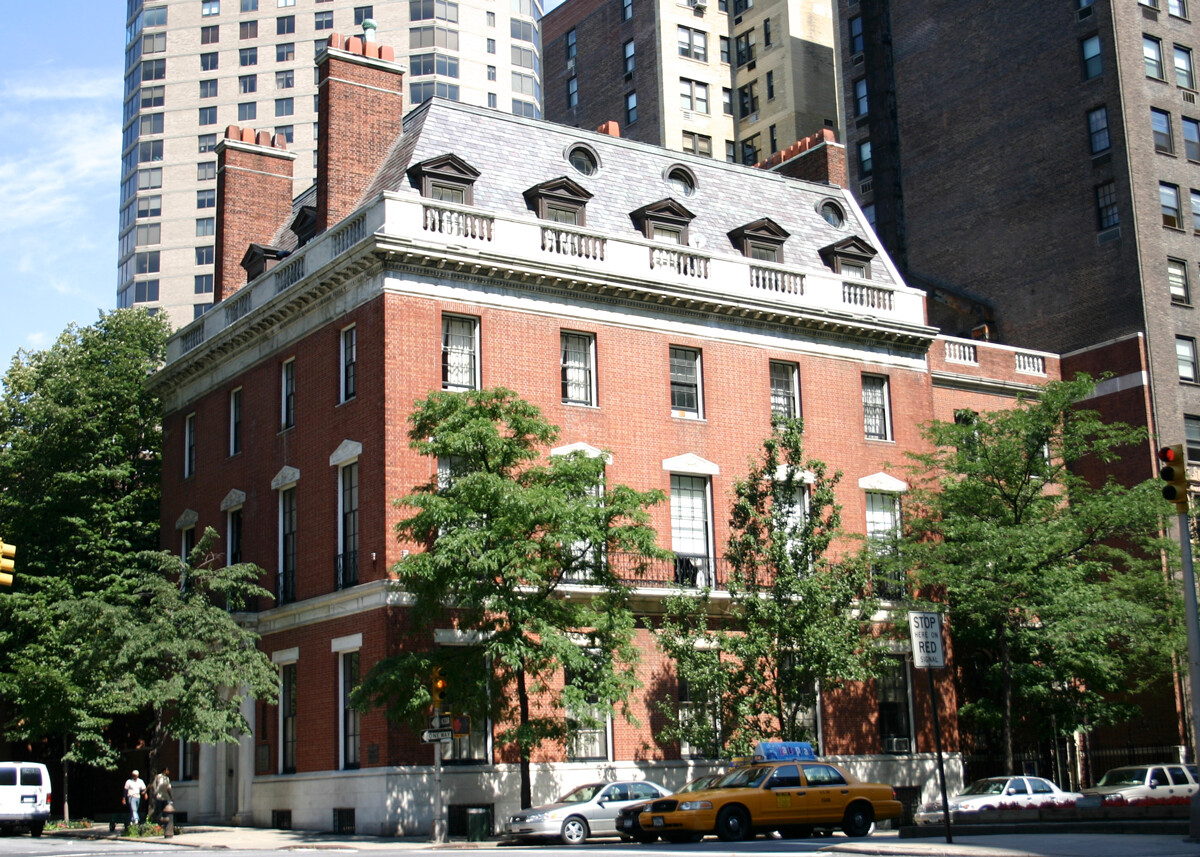
The Francis F. Palmer House, 75 East 93rd St. at Park Avenue where the icon is now held (Now the building is the headquarter of the Russian Orthodox Church Outside of Russia)
Buckyboot / Public DomainIn 1950, the ruling authority of the Russian Orthodox Church Outside of Russia decided to move itself entirely to the U.S., and took the Wonderworking Kursk Root Icon of the Mother of God with them, building the New Kursk-Root Icon Hermitage in Mahopac on Long Island in order to house it. The icon didn’t stay there long, however, and in 1958, the Synodal Cathedral of the Sign in Manhattan was built to house the sacred image.
In 2009, for the first time since the Civil War, the icon visited Russia, exactly 90 years after its departure from the country. Before reaching Russia, however, the icon was sent on a tour across the U.S., as well as making visits to Orthodox communities in South America and even in Australia.
In Kursk, even though the original icon is no longer there, Orthodox believers continue to hold a religious procession every year from the Cathedral of the Sign to the Hermitage of the Roots with a medieval copy of the icon.
Dear readers,
Our website and social media accounts are under threat of being restricted or banned, due to the current circumstances. So, to keep up with our latest content, simply do the following:
If using any of Russia Beyond's content, partly or in full, always provide an active hyperlink to the original material.
Subscribe
to our newsletter!
Get the week's best stories straight to your inbox